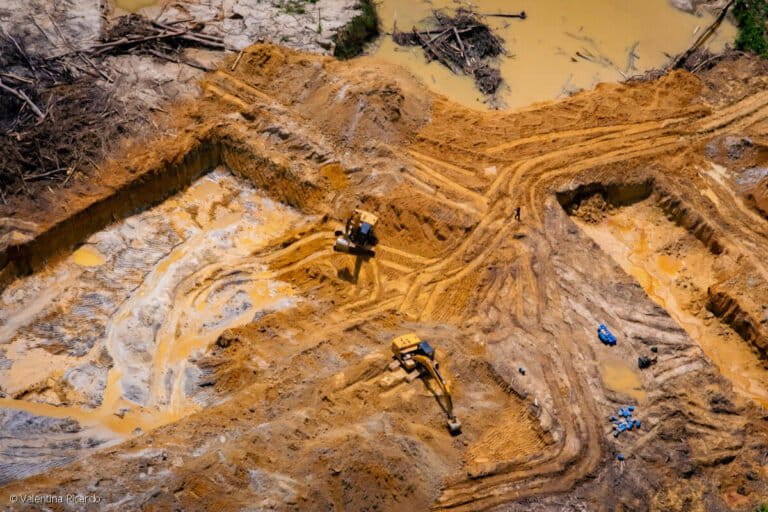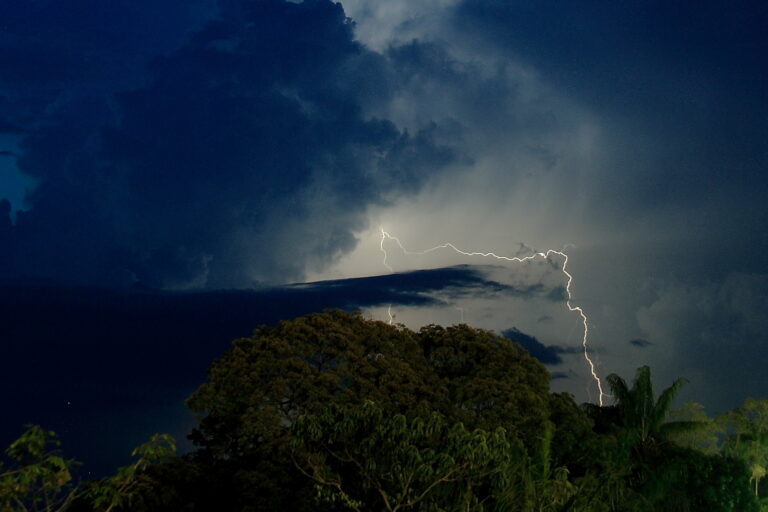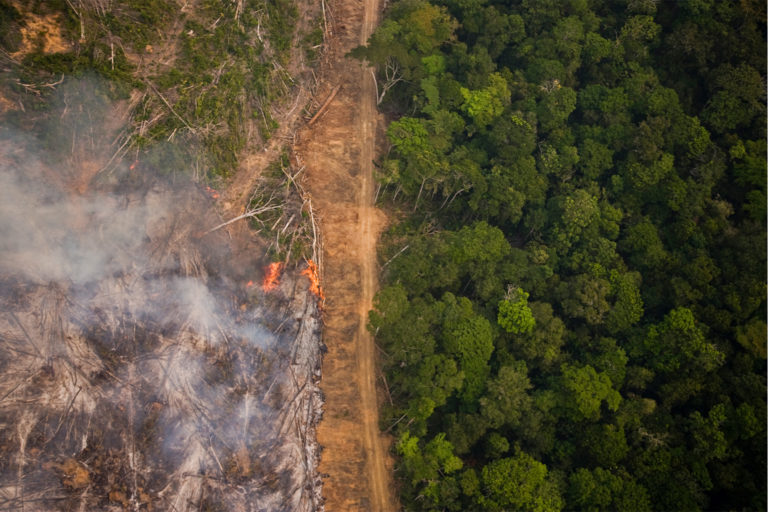- Mongabay has begun publishing a new edition of the book, “A Perfect Storm in the Amazon,” in short installments and in three languages: Spanish, English and Portuguese.
- Author Timothy J. Killeen is an academic and expert who, since the 1980s, has studied the rainforests of Brazil and Bolivia, where he lived for more than 35 years.
- Chronicling the efforts of nine Amazonian countries to curb deforestation, this edition provides an overview of the topics most relevant to the conservation of the region’s biodiversity, ecosystem services and Indigenous cultures, as well as a description of the conventional and sustainable development models that are vying for space within the regional economy.
- Click the “Perfect Storm in the Amazon” link atop this page to see chapters 1-13 as they are published during 2023.
Today, Mongabay launches a digital version of the book, A Perfect Storm in the Amazon, by Timothy J. Killeen, an academic and expert who, since the 1980s, has studied the taxonomy of the rainforests of Brazil and Bolivia, where he lived for more than 35 years. In 2023, Mongabay will publish it in short installments, in three languages: Spanish, English and Portuguese.
In it, Killeen chronicles the efforts of nine Amazonian countries to curb deforestation, as well as the complex problems facing South America’s forests. This new edition of A Perfect Storm in the Amazon provides an overview of the topics most relevant to the conservation of the region’s biodiversity, ecosystem services and Indigenous cultures, as well as a description of the conventional and sustainable development models that are vying for space within the regional economy.
The broad scope and descriptive detail of the narrative will provide readers with an understanding of the synergies among the complex phenomena that threaten the conservation of the Amazon, as well as an objective analysis of sustainable production models and regulatory reforms that are essential for bending the arc of history and saving an ecosystem of critical importance for the planet.
Chapter 1. The state of the Amazon
The introductory chapter starts with a description of the current political economy of the Amazon from the vantage point of its gross domestic product. The narrative explains why GDP provides both a flawed perspective of the regional economy, as well as offering a context for understanding conventional production systems that drive environmental degradation. It is followed by a description of the geography of the human modified landscapes of the Amazon, which includes four subregions (Amazon River Corridor, Southern Amazon, Andean Amazon and Guiana Amazon) and thirty frontier landscapes stratified by economic production system and stage of development (forest frontiers, agricultural frontiers, consolidated frontiers, gold mining frontiers and coca frontiers).

Chapter 2. Infrastructure defines the future
Deforestation is most notably associated with the extension of the highway network in the Brazilian Amazon, less well known is the history of a similar but distinct process that occurred in the Andean and the Guiana Amazon. National policies continue to favor the improvement and expansion of these transportation corridors; most enjoy strong local support. A description of hydropower provides an historical narrative, as well as an explanation of the impacts associated with the different dam and reservoir configurations. While the public debate has focused on highways and dams, investment is increasingly concentrated in bulk transport systems (rail and waterways) and industrial infrastructure (processing mills and packing plants). The improvement of infrastructure is driven by the growth in agribusiness and a desire to ‘adding value’ to the transportation and hydropower investments of the last three decades. The role of multilateral investment institutions is evaluated, as is the growing importance of capital from China
Chapter 3. Agriculture determines land use
Highways determine where deforestation occurs, but settlers and agribusiness clear forest to establish agricultural production systems. All major production systems (beef, soy & maize, palm oil, coffee, cacao, food crops and coca) are examined in detail for each subregion. The productivity and profitability of smallholders and agribusiness is evaluated in the context of how they deploy capital, technology and labor, as well as their dependence on local, national or international commodity markets.
Chapter 4. Land: the ultimate commodity
Land appreciates in value as forest frontiers evolve into agricultural frontiers and, eventually, into fully consolidated development corridors. Pioneers often tolerate years of marginal profits, or even losses, in order to monetize large capital gains when they sell their homesteads. Land speculation is an underappreciated driver of deforestation on properties acquired in past decades via the extra-legal appropriation of state lands, as well as on new landholdings created by the blatantly illegal activity known as land grabbing. The appropriation of state lands is facilitated by the disfunction of land tenure registries that were designed originally to foster settlement and promote deforestation. Governments have failed, repeatedly, to reform both the judicial and administrative aspects of land tenure systems.

Chapter 5. Mineral commodities: a small footprint with a large impact
The extractive industries are strategically important to the national economies of the nations of the Pan Amazon; with the exception of Peru, the contribution of the industrial mining sector to regional GDP is limited, because mineral rents are captured by central governments. The capital intensive formal sector is dominated by corporations that seek to minimize short-term impacts and avoid long-term liabilities. Artisanal gold miners inject significant sums directly into the local economy, but their operations are an ecological and social disaster that no country has under control.
Chapter 6. People as drivers of environmental degradation
By necessity or design, people make decisions with relatively short time horizons and choose among livelihoods constrained by public policies and market exigencies. This chapter explores how migration, population growth and urbanization have influenced development in the Amazon, as well as the role of geopolitics and vested interests in promoting conventional business models. A legacy of rural poverty and deep seated cultural traditions are the primary cause of inequality, which limits opportunities for the majority, while providing impunity for a few. Endemic corruption magnifies inequality and nurtures an informal economy that undermines the rule of law and impedes market-oriented policies that promote sustainable development.
Chapter 7. Governance: much improved but far from adequate
The countries of the Pan Amazon have launched multiple initiatives over the last three decades to modernize regulatory systems, improve transparency, and decentralize the administrative functions of the state. Environmental review has improved enormously but is still subject to regulatory capture by vested interests. Decentralization has empowered local environmental and social activists, but local elites committed to conventional business models dominate the political process. Environmental law has become an important source of reform, but weak judicial systems have yet to change the behavior of stakeholders pursuing non-sustainable production model. Landholders continue to clear forest in defiance of land-use zoning restrictions (the Forest Code) and artisanal gold miners who operate with the tacit approval of local authorities.

Chapter 8. The quest for sustainability
Traditional communities and entrepreneurs have enjoyed some success in adopting or expanding sustainable production in forestry and fisheries, but governments and the private sector have failed to reform the largest component of the forest economy: the timber industry. The promise of reforestation, agroforestry and plantation forestry remains unfulfilled, although aquaculture is increasingly popular among both smallholders and businessmen. The experiences of Cuzco, Madre de Dios and Manaus highlight the potential of the travel industry, but the growth in ecotourism is constrained by a lack of infrastructure and limited human resources. Some commodity supply chains have experienced positive change due to the consumer boycotts, moratoria and voluntary certification systems, but even successful initiatives face challenges caused by the displacement of production (soy, palm oil) and cheating (beef, timber). Successful policies pursued by Brazil between 2005 and 2015 relied on an integrated all-of-government approach that coordinated programs among state, local and national authorities: Satellite monitoring systems were used in combination with a quasi-voluntary land registry system. Expanded extension services and subsidized credit provided positive incentives that complimented private sector initiatives to improve market access. High profile law enforcement actions changed the risk/reward calculus of landholders, land grabbers and artisanal gold miners.
Chapter 9. Advances in biodiversity science
The region has experienced an impressive expansion in the infrastructure of knowledge over the last several decades as governments invested in universities and research institutions. The development of biodiversity databases accompanied an exponential increase in the collection of specimens and field data. Local scientists now participate in the identification of globally endangered species and habitats, while organizing a regional network of long-term permanent plots to document forest dynamics.
Chapter 10. Knowledge is power: deforestation, water cycles and climate change
Remote sensing technology pioneered in Brazil has expanded across the globe; deforestation and wildfire are monitored in real time in all Amazonian countries. The combination of forest plots and satellite data provides validation for global and regional models that estimate the contribution of the Amazon forest to the global carbon cycle and its essential role in maintaining the hydrological stability of the South American Monsoon. Some integrated ecosystem-climate models forecast that ongoing deforestation and climate change could trigger a phase-shift in atmospheric water recycling and lead to a tipping point that triggers a catastrophic forest dieback across the Southern Amazon.

Chapter 11. An Indigenous awakening
Indigenous people are the Amazon’s fiercest and most effective conservation advocates because the struggle for their territories is existential: if they lose their land, they will lose their identity and cease to exist as a people. The decades-long revitalization of Indigenous communities has paid monumental dividends for Amazonian society . Their commitment to biodiversity conservation ensures their territories will be managed as sustainable use reserves. Their commitment is hard-wired into their culture, reinforced by recent history and the bitter struggle to defend their lands. They are quite literally conservation warriors.
Chapter 12. Conservation report card
Approximately 230 million hectares of public lands have been set aside as some type of protected area, about half of which are recognized as multiple-use areas with management regimes covering that allow for hunting, fishing and the harvest on non-timber products, as well as timber exploitation, mining and small-scale agriculture. Management guidelines remain largely aspirational and the consolidation of the networks is an ongoing process. National protected area systems are essentially complete, but regional governments continue to establish new reserves, particularly in the Andean Republics where the decentralization of the state is ongoing. Efforts to improve natural resource management outside of protected areas and Indigenous territories has been less successful, in spite of strikingly clear examples of the economic value of natural capital. Efforts to create a payment for ecosystem services (REDD+) have been underway for more than a decade, but its proponents have been unable to implement it at scale due to the lack of a robust global carbon market.
Chapter 13. What Next?
The final chapter is organized into four sections: (1) What Will Almost Certainly Happen, describes the policies or phenomena that will persist into the future under almost any scenario; some are positive, others not so much (e.g. existing roads will be improved). (2) What Might Possibly Happen, describes outcomes that may or may not occur depending upon policies or investment decisions that will be adopted in the near future (e.g., road networks will be expanded – or not). (3) What Should Never Happen, describes policies, investments or outcomes that should never be allowed to happen due to their obvious negative impacts (e.g., an increase in global mean temperatures over 3°C. (4) What Absolutely Must Happen, describes policies that are absolutely essential for conserving the Amazon (e.g., the development of some sort of payment of ecosystem services mechanism). The chapter concludes with a review of potential policy opportunities, particularly actions that might stabilize the hydrological function threatened by deforestation, wildfire and climate change.
A Perfect Storm in the Amazon is a book by Timothy Killeen and contains the author’s viewpoints and analysis.
Banner image: Serranía de Caparú, Noel Kempff Mercado National Park, Santa Cruz, Bolivia. Image courtesy of Hermes Justiniano.
Find all the excerpts of chapter 1 here:
 Chapter 1. The state of the Amazon
Chapter 1. The state of the Amazon
- The state of the Amazon May 31, 2023
- Drivers of environmental degradation in the Amazon June 1, 2023
- The geography of environmental degradation in the Amazon June 7, 2023
- The political economy of the Pan Amazon June 8, 2023
- Understanding the conventional economy of the Pan Amazon June 13, 2023
- The natural history of the Amazon Rainforest June 14, 2023
- Forest ecology and carbon dynamics in the Amazon June 20, 2023
- Climate change and moisture recycling in the Amazon June 22, 2023
- Environmental policy and action on the ground in the Amazon June 27, 2023
- Environmental governance in the Amazon June 28,2023
- The largest land set-aside in history June 29, 2023
- An Indigenous revival in the Pan Amazon July 6,2023
- Monetizing nature: The under-explored power of the Amazon’s natural capital July 7, 2023
- The challenge of the future (and lessons from the recent past) in the Pan Amazon July 12, 2023
- Current policy approaches in the Amazon: certainly necessary, but are they sufficient? July 13, 2023
See an interview with Tim Killeen here:
A wild life studying the Amazon: Q&A with author Tim Killeen
